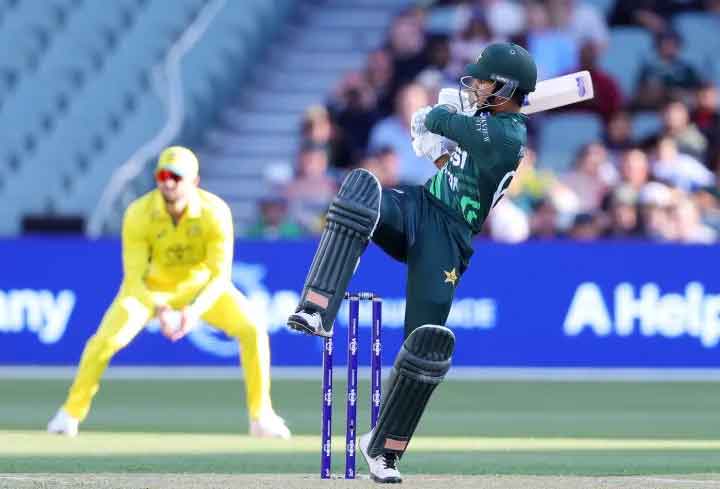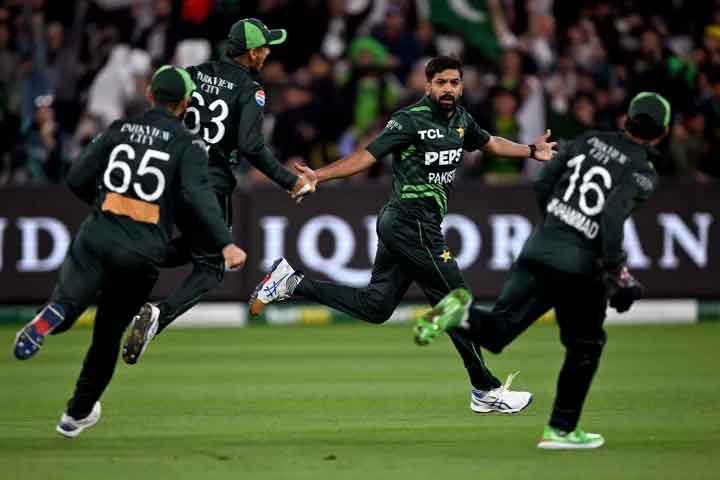If someone told you Australia would bat 99.5 overs in this three-match ODI series, one that produced both a nine- and an eight-wicket win, you would have let out a resigned sigh. Pakistan had lost 26 of their last 28 games across formats in this country, had seen a captain and coach resign within the last month, and played no 50-over cricket for a year. Australia fielded a near-full strength side for each of the first two games, and were, as they often tend to be, reigning world champions in this format. Of course these games were going to be one sided; Australia needed to do little more than turn up wearing yellow.
Nobody gave Pakistan a chance. This was the land down under, not the land upside down. They don’t do that kind of thing round here.
It is remarkable how simple it was after all. Babar Azam had often tried to hide his side’s weaknesses as leader; Mohammad Rizwan wore them like a war wound. Yes, Pakistan had no answer to Adam Zampa. So they didn’t play a spinner at all. Yes, they didn’t have an allrounder they felt they could trust. So they just played four bowlers. Yes, four express seamers would be an issue for the over-rate. So they made sure they bowled Australia out in 40 overs. Yes, they didn’t have much batting depth either. So they made sure to bowl Australia out modestly enough they didn’t have to chase much.

There Pakistan stood, their glaring weaknesses in full view, their soft underbelly exposed for Australia to slice through. But Pakistan have spent much too long on the defensive against Australia, and have the scarring to show how that ends. The recent Test series against England had demonstrated the value of bespoke conditions as a route to victory, and so, on these bouncier, seaming surfaces, they burnt their bridges and unleashed their four-pronged pace attack.
There was Shaheen Shah Afridi, a man denuded – of both his captaincy and his pace – looking for arrows to add to his quiver. Experimenting with his wrist position and finding sideways movement both ways, he was arguably the bowler of the series. Australia opened with Matthew Short and Jake Fraser-McGurk, two men with T20 strike rates north of 150. Up against them with the field in, Shaheen’s economy of 3.76 was the lowest of any bowler all series, and he would account for three of the six times they fell, combining for 78 runs in 84 balls across the series.
Saim Ayub lived up to his potential Cricket Australia/Getty Images
There was Naseem Shah, the most proficient at making the ball talk at pace, perfecting the art of bowling beautiful deliveries that don’t get wickets. Arguably Pakistan’s best bowler in the third game, he made up for his relative expense with menace across all phases of play, especially puncturing Australia early on with new-ball wickets in the final two games.
Mohammad Hasnain, whose painfully shy exterior belies the fire that burns underneath, didn’t quite get the number of wickets his team-mates did, but snared the one he really wanted. He would toy with Marcus Stoinis, who once accused him of chucking in the Hundred, before bringing his tortured stay at the crease to a close. There was a brief moment when he considered giving the batter an invective-laden send-off before quickly realising it didn’t come naturally to him, and turned his innocent smile back towards the team-mates who rushed to mob him.

Polar opposite, of course, is Haris Rauf, the man this series truly belonged to. Perhaps it is his unapologetic extroversion that has seen him do so well in Australia. His record here is well known, but he hadn’t actually played a one-day game in this country until last week. And yet, his main character energy blazed through every pore as he bent Australia to his will. It was exemplified by his takedown of Australia’s flashiest star in this line-up, Glenn Maxwell dismissed three times in nine balls, a microcosm of a mismatch that told the story of this series.
There are glimpses of optimism elsewhere, too. Rizwan’s proactive captaincy may signal a tonal shift for a side that has trudged directionless in the shorter formats for several years now. As Fakhar Zaman approaches the home stretch of his career, there is perhaps also the rustle of large shoes beginning to be filled. Saim Ayub’s nerveless displays in two chases that have historical banana-skin potential for Pakistan justify his gradual induction into ODIs; he is already the second-highest Pakistani run-scorer in successful winning chases against Australia in Australia, six runs behind Javed Miandad.
The Pakistan players and support staff celebrate after the series win AFP/Getty Images
It is a mark of how dominant Pakistan have been this series that the middle








Leave a Reply